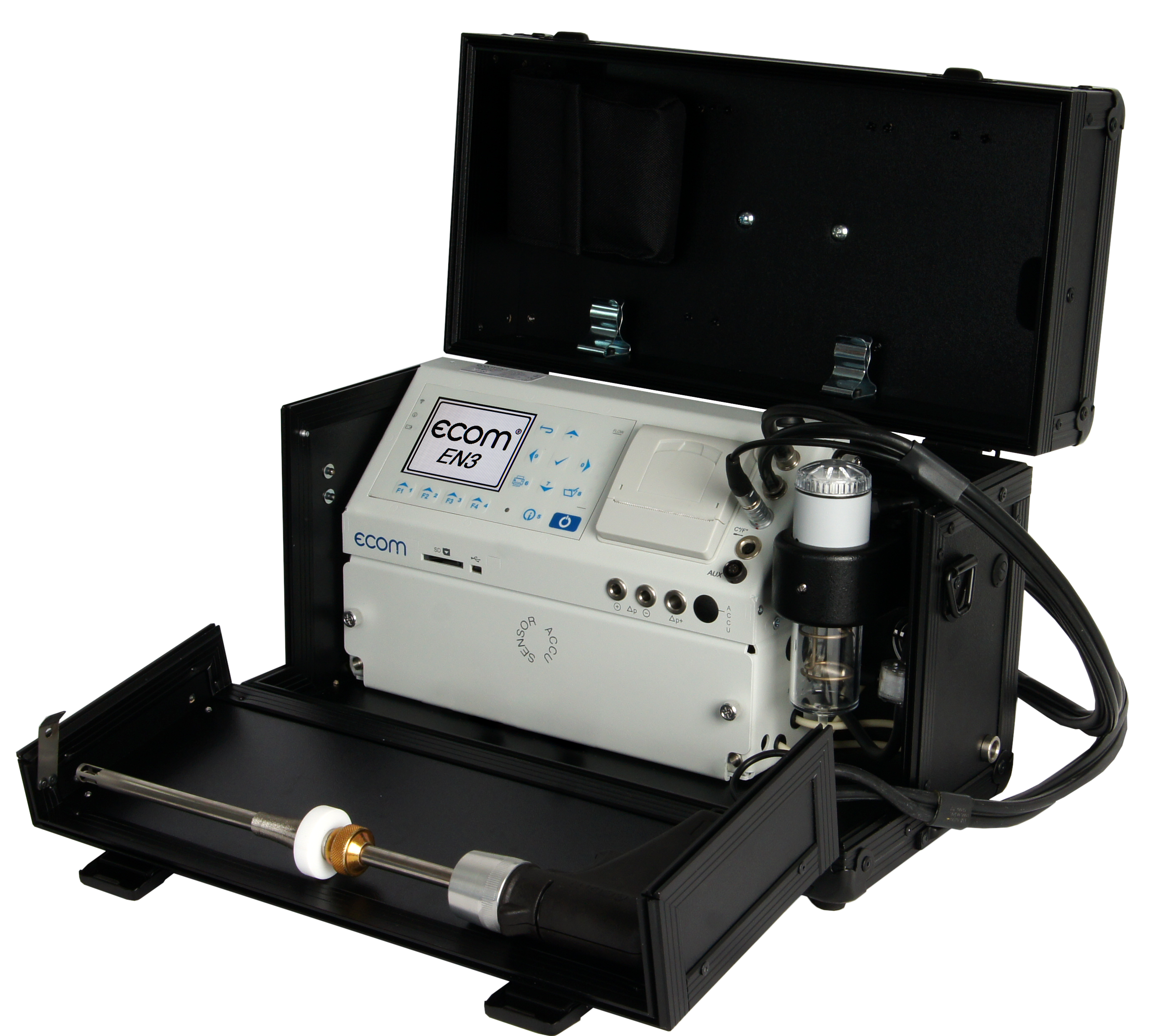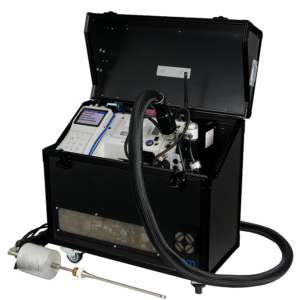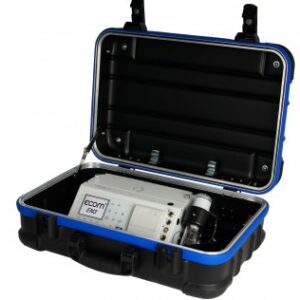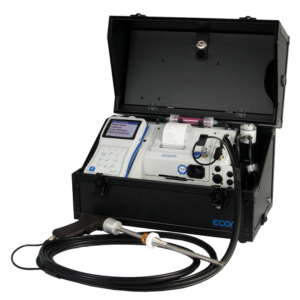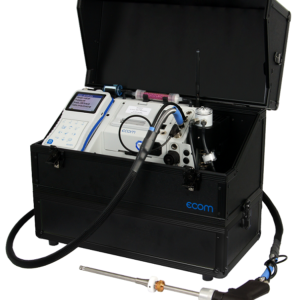The ecom-EN3 is a compact portable combustion analyzer, offering features found on larger, more expensive units. Housed in a rugged aluminum frame and hard-side case, the EN3 measures up to 6 gases, from O2, CO, NO, NO2, SO2 and CxHy, plus probes for temperature and stack draft / pressure. The ecom-EN3 also calculates CO2, efficiency and excess air. A strong, internal pump and peltier gas cooler with automatic condensate drain ensures proper sample conditioning, leading to better accuracy and longer sensor life. An on board printer, SD Memory Card and wireless Bluetooth are standard features. Common applications for the ecom-EN3 include set-up, maintenance and emission monitoring of natural gas, diesel, and oil fired boilers, burners, and reciprocating engines. The compact size, simple operation, and long battery life (6-8 hours) make the ecom-E3 a perfect tool for field technicians.
ECOM-EN3 COMBUSTION | FLUE GAS | EMISSIONS ANALYZER
Key features
- PE conductor can be tested for possible presence of dangerous voltage against earth
- Perform Cable Simulation with the PP State rotary switch simulating current capabilities of charging cables
- Perform Vehicle Simulation testinig various charging states
- Simulate PE error (Earth fault)
- Test in accordance with IEC/EN 61851-1 and IEC/HD 60364-7-722
STANDARD FEATURES ecom-EN3
- Up to 6 Sensors
- Sensor Options: O2, CO, NO, NO2, SO2, CxHy, IR CO2 & IR CH4
- Data Logging with Memory Card
- USB Interface
- On-Board Printer
- 15ft Standard Sample Line*
- CO Purge Pump to Prevent Oversaturation
- Peltier Cooler Sample Conditioner
- Peristaltic Pump for Automatic Moisture Removal
- Flue Gas, Ambient, & Sensor Temperature Sensors
- Bluetooth Link
- Averaging Tests
- CO2, Efficiency, Losses, Excess Air, & O2 Correction Calculations
- 1ft Inconel Probe*
- *Other lengths available. Please ask an ECOM sales associate for details.
HOW DOES IT WORK?
Each sensor has a circuit housed within an electrolyte solution and when the target gas is introduced into the sensor, the half reactions (oxidation and reduction) at the electrodes generate a flow of current through the circuit. The voltage drop across the electrodes is measured by the analyzer and corresponds directly to the target gas concentration (i.e., the higher the concentration of gas, the more reactions that take place, the higher the current). In each of the electrochemical sensors we use, there is also a third reference electrode which maintains a baseline potential for increased accuracy.
OPTIONAL ADD-ONS
- Calibration Gas Kit
- Soot Test Probe
- 1ft Flex Tip Probe
- e-Comply Software
